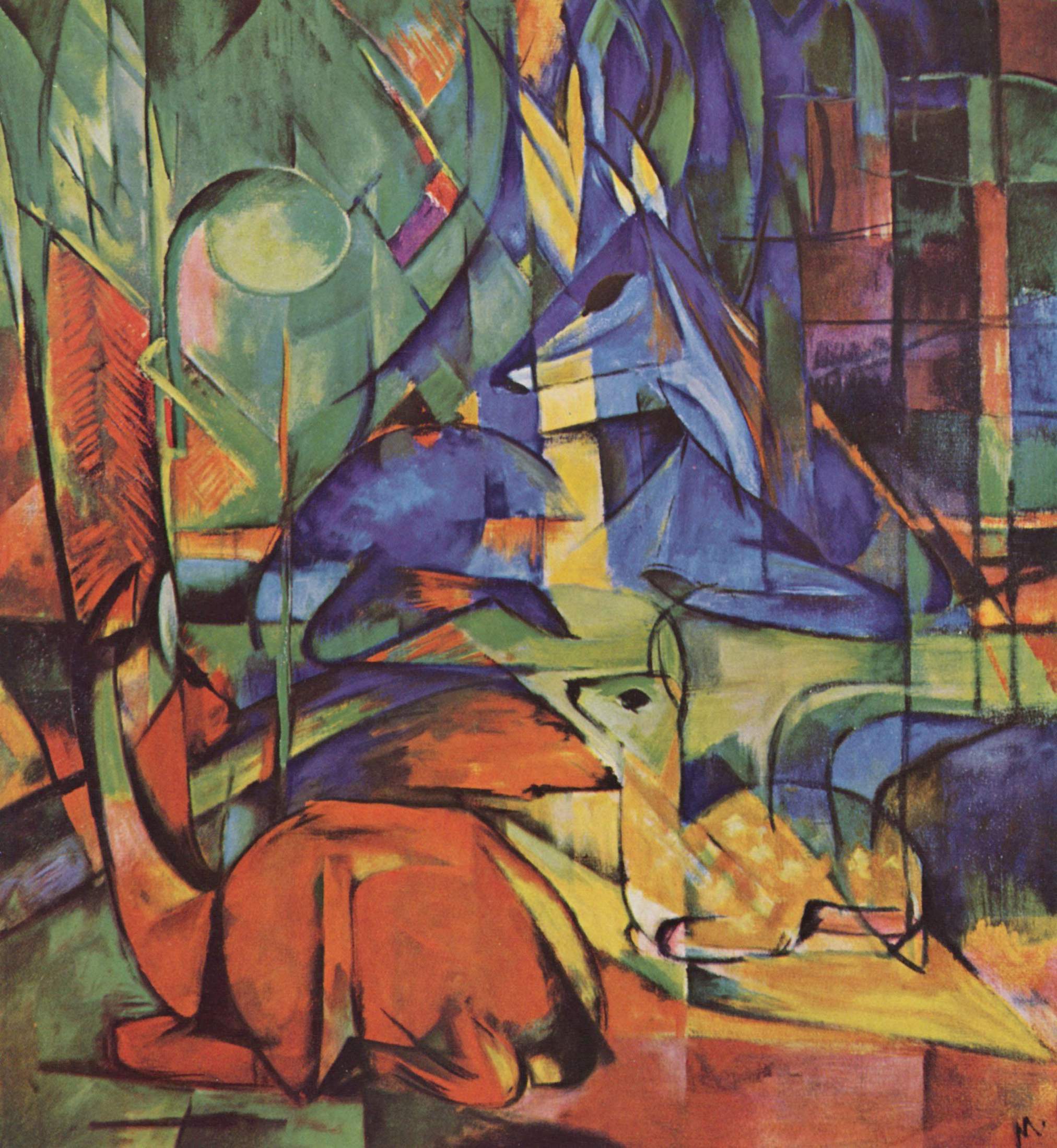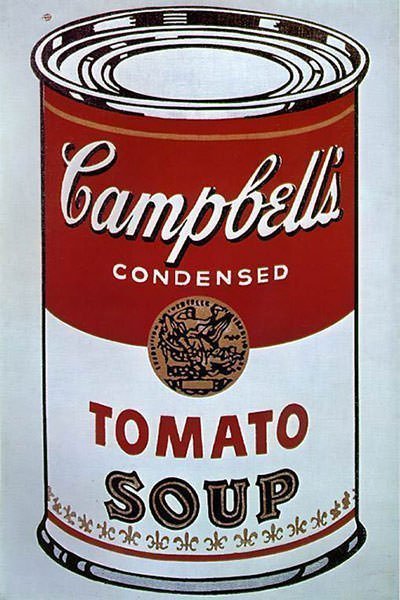An art movement is a certain characteristic or style within art this will have a certain philosophy or a goal.These would be created by a number of artist threw a certain period of time that can range from a few months , year or decades. These were very important as they showed the progression of art.
One of the first Art movements in the 1900's was expressionism which was known as fauvism for a short while before. This movement made artist stray away from the traditional art and allowed them to express emotions with bright and extremely vivid colours and subjects creating these emotional images. The aim of these images were to express "personal feelings about the object painted, rather than merely record his observation of it. Thus, in order to achieve maximum impact on the viewer" (http://www.visual-arts-cork.com). The prime time for this movement was 1905 to 1925. This work focuses less on reality and more on emotions. This is achieved threw distortion, exaggeration and fantasy threw all these vivid colours this started art should now come from within. These pieces of work were very distorted and quirky. The inspiration for this work was founded in European art and culture and tribal art.
This work first started with artist such as Vincent van Gogh, Edward Munch and James Ensor who brought this unique style to life who were brave enough to break away from the traditional styles of art. A lot of the work showed emotions of frustration and anxiety with these fast brush strokes and aggression this was so shocking to people as it was the first step away from traditional art.

I really like these pieces of work as they show boldness and ambition as they strayed away from the traditional style of art and the injected these amazing bright colours to create emotion and fantasy into their images. I think these pieces are so unique and are really pleasing to the eye they also make you really think about the images and looks at them in greater depth as at first glance some of the image are not as clear and I think this makes you appreciate the art work more as you take more time to look at it and take it all in.
symbolism was a art movement in the 19th century this was very unique just like expressionism however this focused on using forms, lines, shapes and colours to suggest ideas or meaning. This again was another way to express emotions rather than using realism to express these feelings. Their work was extremely personal. "The subject matter focused mainly on religion however it also focused on a dream world of feelings of being morbid, death or evil" (http://www.theartstory.org//) Some of the artist who were well know for this kind of work were Paul Gauguin, James Abbott McNiell Whistler and Odilon Redon. This art movement was opposite to expressionism as it did not consist of bright colours or didn't express fantasy as this focused on death and evil and had depressive tone to it.

all of these images have an atmospheric feel to them and almost and eerie feel to them. They all of consist of quite pale colours and they have a lot of pale green yellow and brown within. None of these images have a clear narrative to the images which I like as I feel you have to really to think about these images. These images are really symbolic. However they use simple objects to make it effective and focus very much on fantasy however it focuses on the dark side of fantasy.
Surrealism first started in the 1920 this movement focused on dreams and fantasy however in a very different way this looked at dreams and the unconscious mind. These images were very out of the ordinary and did not make much sense as they were things people would of never seen before as they were so unrealistic. "The aim was to make dreams into reality by creating this "super reality" (http://www.artmovements.co.uk/surrealism.htm). This particular art movement was founded in Paris by Andre Breton in 1924 and can also link back to French poets who put the idea of surrealism in words. The main artist threw this movement were Salvador Dali, Max Ernst, Rene Magritte an Joan Miro who played a big part in this movement that is still making an impact today.


I really like these pieces of art as they don't make sense at all yet you can understand what is going on in the picture.The narrative of the image is so unclear and they do that the element of fantasy into them however this is linked in with confusion.. I also like these images are very out of the ordinary each image is unique. Most of the images have a lot of blue within the images this adds a calming effect to the images which links in with dreams as sleep is usually associated with being calm. I think this art movement has had the most impact on the progression of art as it still exist today and is still used in many ways.
Photorealism was first founded in the 1960's This was an art movement where artist would create very realistic painting inspired by a photograph however these were flat images. With brush strokes almost unnoticeable these painting looks accurately like photos."Photorealist paintings take many hours to complete, requiring intense concentration and in-depth knowledge of the materials. The end result can be breathtaking and wondrously fun."and. "Photorealist art is also often referred to as Super-Realism, New Realism, Sharp Focus Realism, Verism, or Hyper-Realism" (http://www.art-is-fun.com/photorealism/). These paintings usesally consisted of objects, landscapes and sometimes portraits. These pieces of work needed great planning unlike expressionism that was very spontaneous when it came to brush strokes. These images provided great detail. Ralph goings,Richard Este and Charles Bell who used oils or arclylic and often displayed them as large images as they were so full of detail the surface was often smooth as they did wanted no visible brush strokes so they looked like photographs.

These images are truly amazing they have so much detail within them, its hard to believe they are not photographs. They are so crisp and clear that they always represent reality. The colours and shading in all of these images are spot on to create these life like images and I think this is what makes this work so significant. Some of them you really cannot tell if they are paintings. The process to create these images must of been very time consuming but it really shows threw with the effects of this method.
Pop art emerged in the mid 1950s in America this was an art movement that was in a post- war society. It looked at creating pieces of work celebraiting everyday items such as drink cans, soup tins and wash powder. These images are usally associated by bright vivid colours and almost gaudy esicially red and yellow these were made to stand out. "Andy Warhol, however, who really brought Pop Art to the public eye. His screen prints of Coke bottles, Campbell’s soup tins and film stars are part of the iconography of the 20th century By embracing commercial techniques, and creating slick, machine-produced art, the Pop artists were setting themselves apart"(http://www.artmovements.co.uk/popart.htm), Roy Hamilton and Jasper Johns also played a big part in creating these eye catching images.
I really like this style of work however I do feel this work is maybe a bit garish and brave as the colours are extremely bold. I do prefer the pieces of pop art that are not as bright. I really like how cartoon this looks with blocked colours and the really harsh shadows this creates depth to the images. The colours in them almost add a element of surrealism into the work as they are not the normal shades found in the images. I can see why these pieces would be used for advertising as they are very striking.
by looking at all these art movements i can see why each has contributed to the progression of art.They are all similar in the way that they are all so unique and all have made drastic changes to art. My favourite movement has to be photorealism as i find the images stunning and so realistic and to make a pieces of art so precise must take a lot of patience i also really like the inspiration behind these as they are inspired by photographs. its almost like creating a photo without having to use a camera. This makes the images so unique as they take so much care in creating these images. In contrast my least favourite is the pop art as i feel it is to garish although i feel the earlier work is better such as the work of Andy Warhol as i think these were not to extravagant. Art has progressed massively threw the years and it seems as the years go one some elements seems to repeat themselves such as bright colours which featured both in expressionism and popart.
sources
http://www.visual-arts-cork.com
http://www.art-is-fun.com/photorealism/
http://www.artmovements.co.uk/surrealism.htm
http://www.artmovements.co.uk/popart.htm








